Downhill bicycle riders enjoy “bombing” mountainous terrain… Weaving through single track, through the trees and across rock fields where no other bikes could survive. They require smaller light-weight wheels that are nimble with large knobby tires and long travel suspension to soak up the bumps. They need to be reinforced with tapered head tubes and larger hydraulic disc brakes that won’t fade with extended use. They also usually require a chairlift or van… to really focus on downhill riding and avoid the long strenuous climb that can sap rider energy and trigger knee pain. With the advent of electric bikes, freeriding (where the rider goes up and down themselves, reaching otherwise less-accessible terrain) has completely changed. The Haibike XDURO Nduro Pro offers ~30 miles in turbo-assisted climbing range per charge (and more than 60 miles on flat terrain). It’s a leading product with top of the line “pro level” components and at $9,100 it is one of the most expensive ebikes I’ve ever tested. Cyclists who know their stuff will appreciate the light weight Fox air suspension, Thompson Downhill carbon handle bar, Mavic wheelset and Kind Shox remote-drop seat post. I’m not much of a downhill rider myself but I do know electric bikes and the drive system offered here is one of the best available right now in the USA. It is extremely responsive (fast to switch on and off), surprisingly powerful (outputting 275% of matched rider power in Turbo mode) and very well balanced (motor and battery are low and center on the frame). With four frame sizes to choose from and a solid two year warranty (five years for the frame itself) it’s easy to see why this bike won second place in the European MountainBike magazine in 2014. That is, it was recognized as the second best mountain bike around, human powered bikes included.
The centerdrive system on the Haibike XDURO Nduro Pro consists of a 350 watt geared centerdrive motor developed by Bosch. This is one of the best motors around in my opinion and is quite capable of climbing even the steepest off-road terrain while still achieving impressive range. The adjustable fork improves climbing ability on this bike because it can actually be shortened on the fly, reducing bob and wheelies. The motor is activated with a smart sensor control unit that measures your rear wheel speed, pedal cadence and pedal torque ~1,000 times per second! Instead of turning one of the bicycle wheels directly, as a hub motor would, the Bosch Centerdrive spins a small sprocket that pulls the chain and leverages gears in the rear cassette for improved climbing ability or top speed. Note that the smaller front sprocket does not require the rider to pedal faster, it’s actually geared to rotate ~2 times for every pedal stroke. It doesn’t introduce significant drag to the system and can be used as a normal bicycle in non electric mode, you could even take the battery pack off to reduce weight if you wanted to. The true benefit to the smaller ring is that it allows the motor to operate at more efficient RPM’s and deliver more effective torque. One possible downside to mid-drive motors like this is that they can increase the strain and wear on your chain and cassette but the Bosch system minimizes this because it has shift detection built in. It automatically lets up when it senses that you’re shifting gears and this reduces mashing. I’ve tested other Haibikes more thoroughly than the Nduro and had the chance to take them on trails in Colorado. What I found was that I used the motor to climb but shut it off on the way down and even on some flat sections. If you left the motor on constantly but rode in the lowest “Eco” mode, the range and performance are very impressive… like 60+ miles impressive. One big question people often ask is “how loud is the motor” and what I’ve found is that noise output depends on which mode you’re using and which gear you’re in. It’s the loudest in Turbo mode while pedaling in a low gear because it’s spinning faster. When riding on trails I often power down when passing people to be polite but what I’ve been told by friends is that even when left on the sound of my wheel on the dirt and rocks actually muffles the sound of the motor in most cases. Hopefully the video review above helps to give you some idea but note that the frame-mounted shots tend to exaggerate the sound as it gets passed through the frame and into the camera microphone.
Powering the motor here is a Bosch Powerpack 400 battery (that actually delivers 396 watt hours of juice). It’s a beautiful looking battery that’s easy to charge on or off the bike in ~3.5 hours and the locking core (made by ABUS) is sturdy with each key being securely unique (it’s a routed in-cut key like many cars use). The battery pack itself has a set of five LEDs built in so you can quickly determine the charge level whether it’s on or off the ebike. I recommend charging the pack after at least one bar has been used or before storing for long periods of time. It’s wise to top it off ever three months if you haven’t used it and storing it in an environment that doesn’t get too hot or cold will also help it last longer. In general, keep it between 20% and 80% capacity to avoid straining the cells. The batteries inside the pack are 18650 size and contain a Lithium Manganese chemistry that’s valued for being light weight and durable. These are the same cells used in electric cars like the Tesla Roadster or Model S and of similar high quality. While the battery pack is not fully integrated into the downtube, it’s less expensive to replace because the same pack is used across the entire Haibike line (and other systems running Bosch for 2014/2015). Unfortunately, the pack and rear swing arm suspension point do take up the space where a water bottle cage might otherwise mount and that means you’ll probably want a CamelBak or similar hydration system. The battery should last for 1,000+ charge cycles if cared for but if you do need a replacement (or decide to get a second for extended range) Currie Technologies offers them for ~$600. For maintenance concerns or support note that Haibike is supported through Currie Technologies and Bosch is supported through Magura in the US.
The control interface on the Nduro Pro electric bike is the same as all other Bosch systems for this generation. It shows speed, distance traveled, battery capacity remaining, timer and range estimation for each of the four assist levels. It’s really neat to see (on the fly) just how far the range estimator thinks you can go because it empowers you to plan accordingly and pop the battery off for a quick charge if needed. You can usually get the pack to ~80% capacity in just an hour and a half. In addition to the removable backlit LCD screen (which has four buttons surrounding it including power, reset, information and lights) there is also an independent button pad that lets you go up or down in assist modes. I like the tactile clicking feedback it produces as you navigate because once you get used to it, you really don’t have to take your eyes off the trail to navigate and control the bike. The Intuvia display is one of my favorites on any electric bike because it can be swiveled forward and back to reduce glare and is completely removable for parking in public spaces or simply reducing wear and weight. It even has a micro USB port on the right side which could be useful for powering some small portable electronic devices. If you’re someone who does a lot of trail riding at night, I’ve seen shops that offer to integrate lights to run off the main battery pack and the display has a switch setup to turn them on or off (which also turns on/off the backlight on the display itself, regardless of integrated bike lights).
It’s easy to fantasize about this electric bike but given the price point, not everyone will be able to justify the expense. For those who want the same high performance drive system from Bosch, beautiful Haibike frame design with hydroformed tubes and gravity casting interface and are willing to go with lower-specced components… consider the Haibike XDURO Ndoro RX for downhill or the Haibike XDURO FS RX 27.5 for cross country. They’re both excellent full suspension offerings and while none of them offer throttle mode, that’s almost preferable for trail riding where you don’t want to compromise your grip or over complicate the cockpit area. As shown in the video above, this bike operates smoothly, won’t dig up the trail and stays relatively quiet under power. The motor is strong and amazingly responsive so it really feels like an extension of you rather than a powered machine. Growing up in Colorado I would occasionally visit ski areas in the summer months and take the gondola up with a rental bike to bomb down. It was a blast, truly a rush of adrenaline and an experience that would have been difficult to replicate without spending hours hiking up. With the advent of ebikes like the Nduro Pro and RX, just about any mountain becomes accessible and you don’t have to spend the drive time or chairlift money to make it happen. There were always hard core riders who would actually pedal up and then bomb trails but with some knee injuries I’ve experienced snowboarding and surfing, that just isn’t an option and frankly, I’d rather focus on the fun parts with a bike like this.
Pros:
- Excellent long travel air suspension by Fox that is light weight and rugged with great adjustability (climb, trail, descend on rear shock CTD)
- High and low speed compression adjustment on the fork (right dial) as well as a length adjuster on the left to reduce wheelies when climbing
- Proprietary Sprocket Equalizing System (SES) reduces chain kickback, keeps the chain from slapping the rear stay when riding on rough terrain and reduces drops, the chain itself has teeth that alternate from narrow to wide which helps reduce slipping
- The hydraulic disc brake rotors are enormous with 200 mm in the front and 180 in the rear for improved leverage, stiffer thru-axle design keeps brakes and wheel aligned under pressure
- Seat post dropper with remote activation is perfect for on the fly body position adjustment, drop the seat when bombing downhill sections so you can use your legs as shock absorbers then raise it instantly for climbing and spinning on flats
- Quick release on front and rear wheel makes the bike easier to break down when transporting it in your car and comes in handy for trail maintenance, also makes the bike less intimidating to work on
- Excellent range thanks to the efficient centerdrive motor that leverages the rear cassette and high performance Lithium-ion 396 watt hour battery
- Great torque output, this bike can climb very well in Turbo mode when you’re pedaling with a lower gear
- Battery pack locks to frame for security using a quality ABUS core, it can be charged on or off the frame for convenience or to reduce weight if you’d like to ride this as a normal bicycle, pack also includes an LED charge level indicator
- Intuitive display panel that’s large, easy to read and removable – the stand alone button pad is easy to reach without taking your hand off the left grip and “clicks” when pressed for tactile feedback (you don’t have to look down when riding)
- Stiff cranks, peformance wheelset, decent aluminum alloy platform pedals, rigid frame for good power transfer when riding, tapered head tube for strength and a carbon fiber handle bar for reduced vibration and weight
- Impressive 11 speed cassette with SRAM XX1 components offering a comfortable cadence at many speeds, 10-42 teeth on cassette sprockets
- Great customer support and warranty from Currie Technologies in the US (part of Accell Group which owns Haibike)
- Four frame sizes offer better fit for a wider range of riders (40cm, 45cm, 50cm, 55cm)
- Shift detection helps reduce wear on the chain and sprockets, the bike experiences less mashing and is easier to ride as a result
- Beautiful paint job, brushed aluminum with matte yellow and white accents, all cables and wires are run through the frame which reduces the potential for snags when riding or hauling this bike
Cons:
- The most expensive Haibike in the line, you get pro-level components but pay a big price compared with the Nduro RX or FS RX 27.5 models
- The battery pack takes up the space where a water bottle cage might otherwise mount and there isn’t one on the seat tube due to the rear suspension setup, consider and aftermarket accessory for the saddle rails or grab a CamelBak
- No throttle mode, this bike only offers pedal assist (like all Bosch powered systems) but will get a better range than if it did, top speed is limited to 20 mph
- The brake levers do not include a motor inhibitor but the drive system is more responsive than others I’ve tested so it hasn’t been an issue
Resources:
- Official Site: http://www.haibikeusa.com/
- More Pictures: https://goo.gl/photos/nJZttUatKi4PQ2QL6

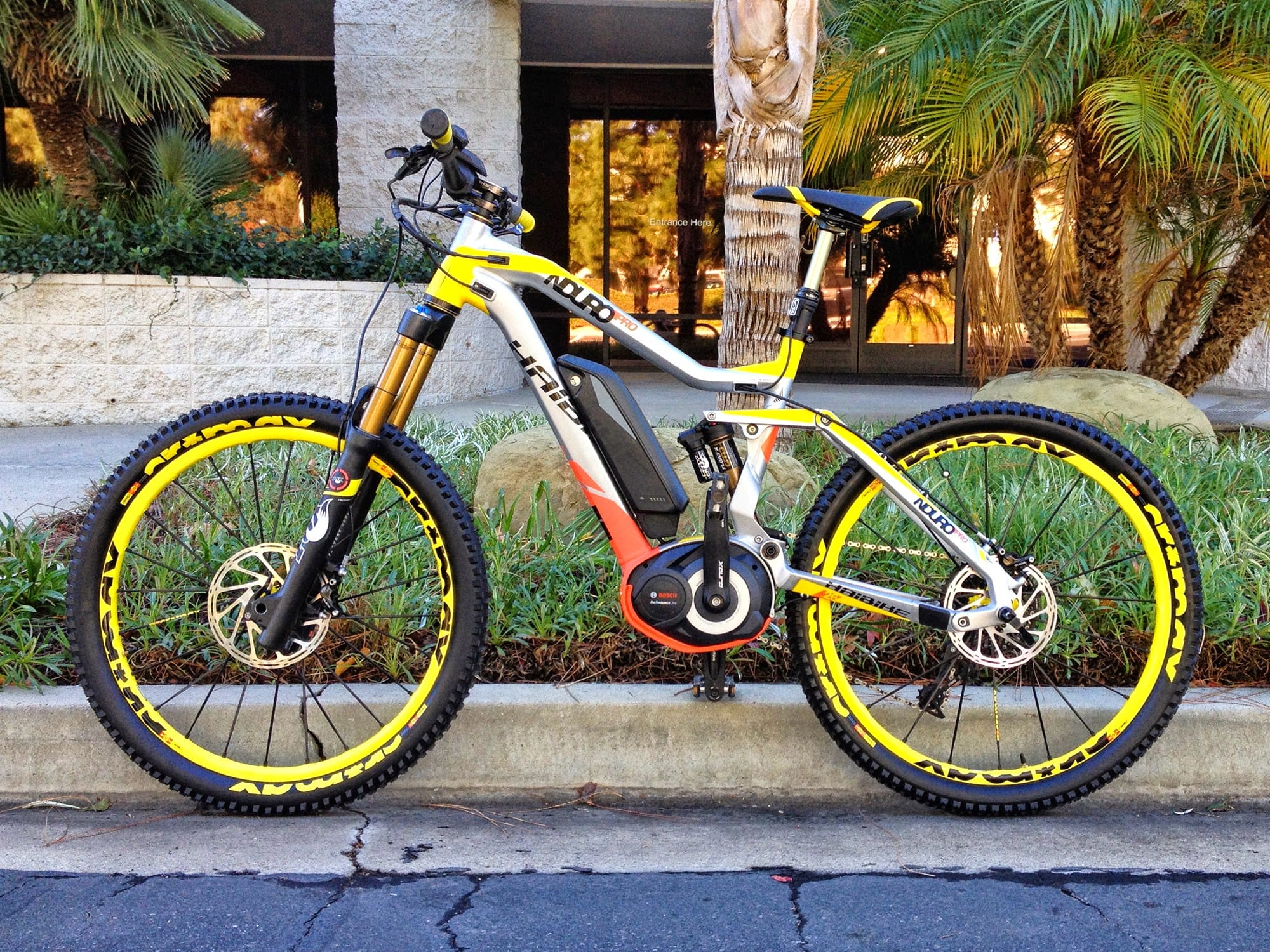

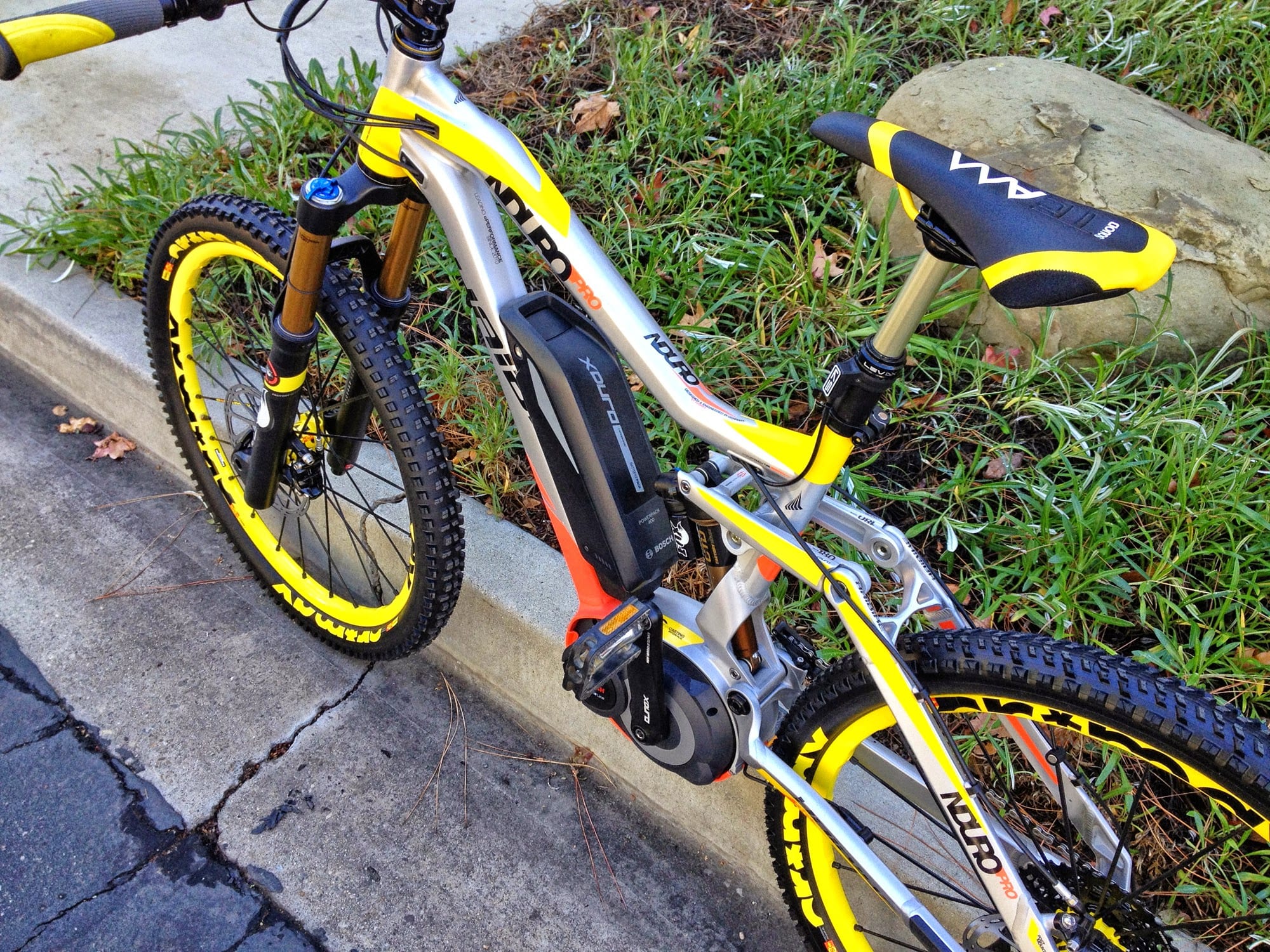
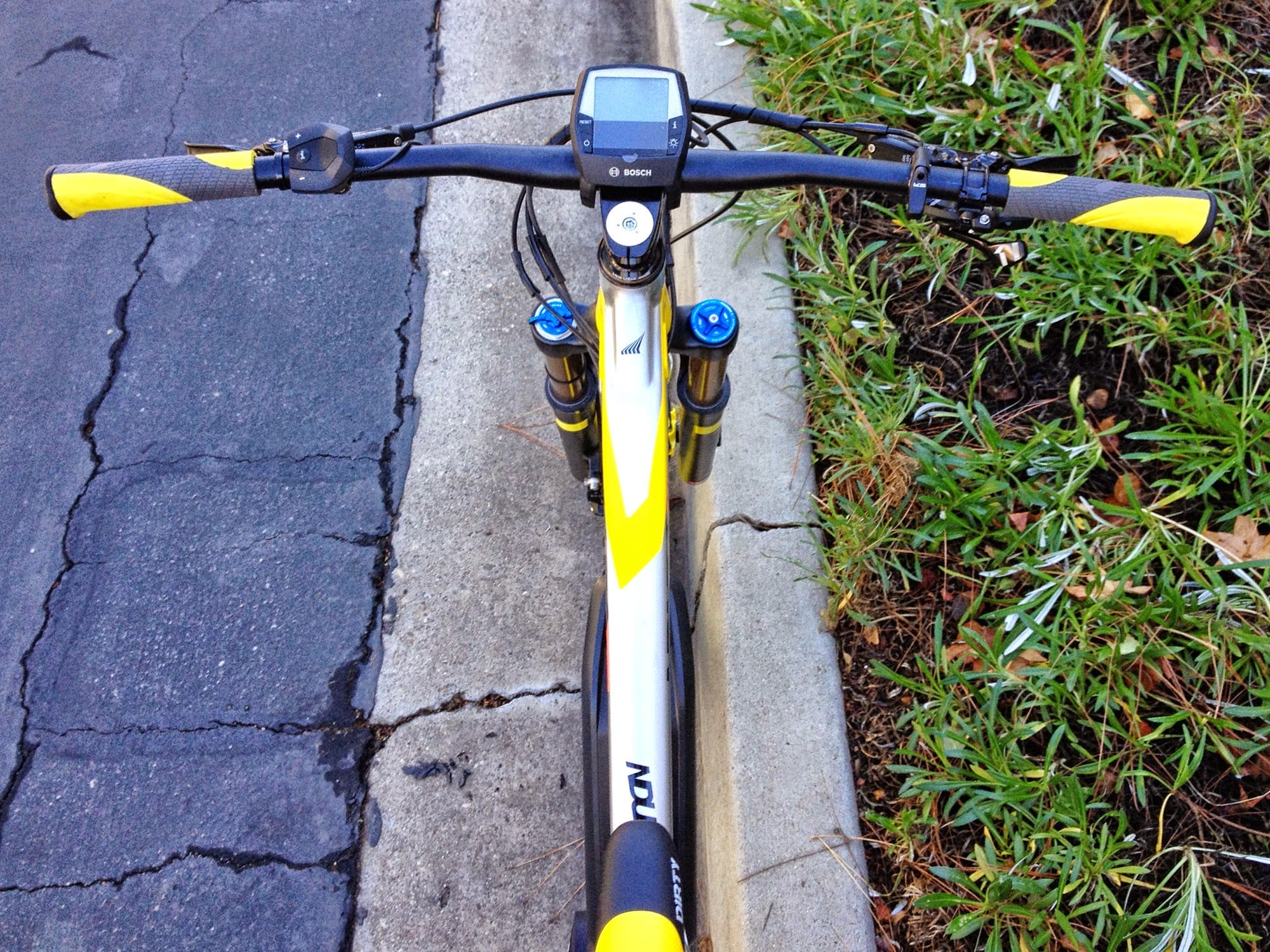
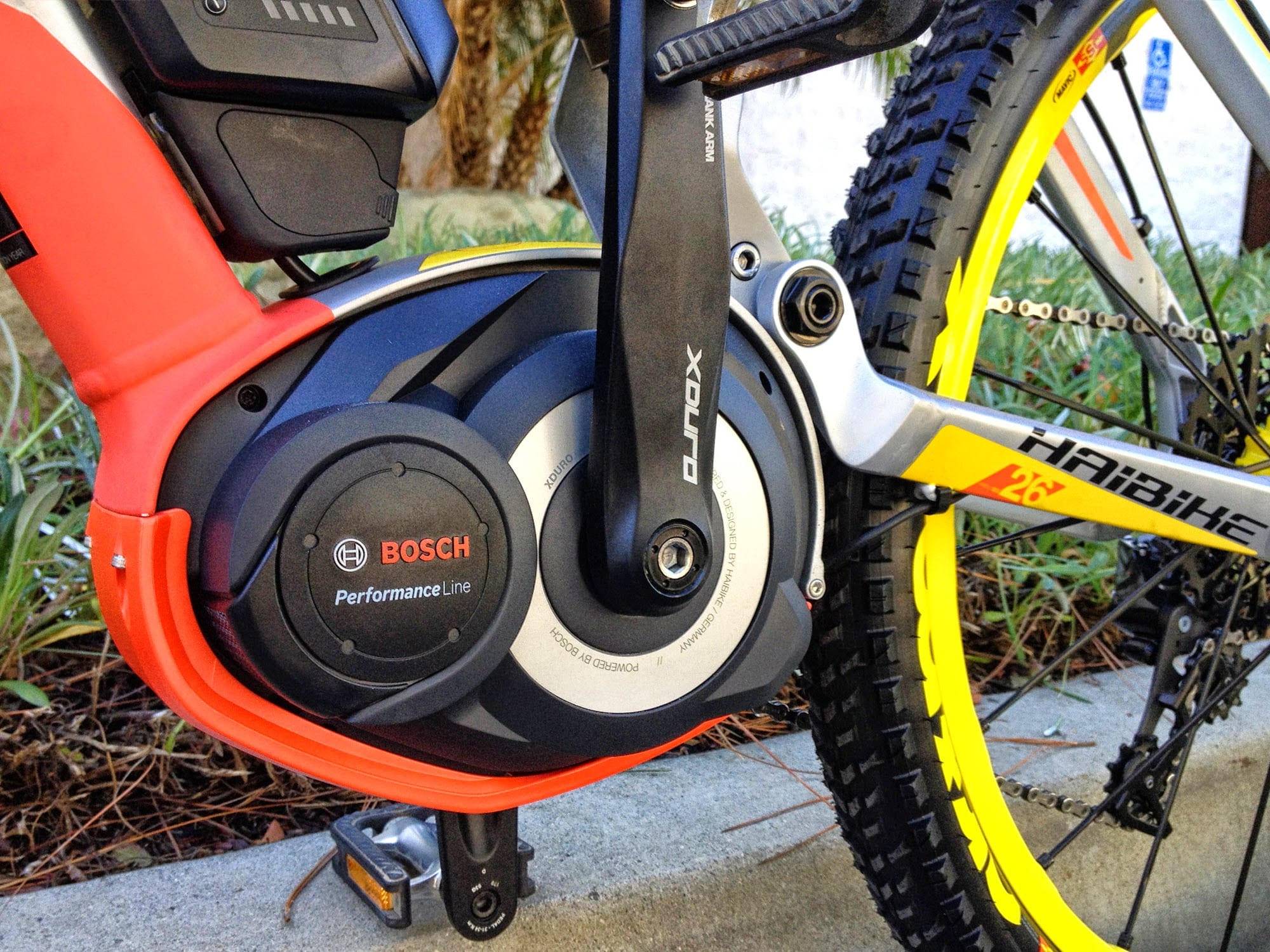
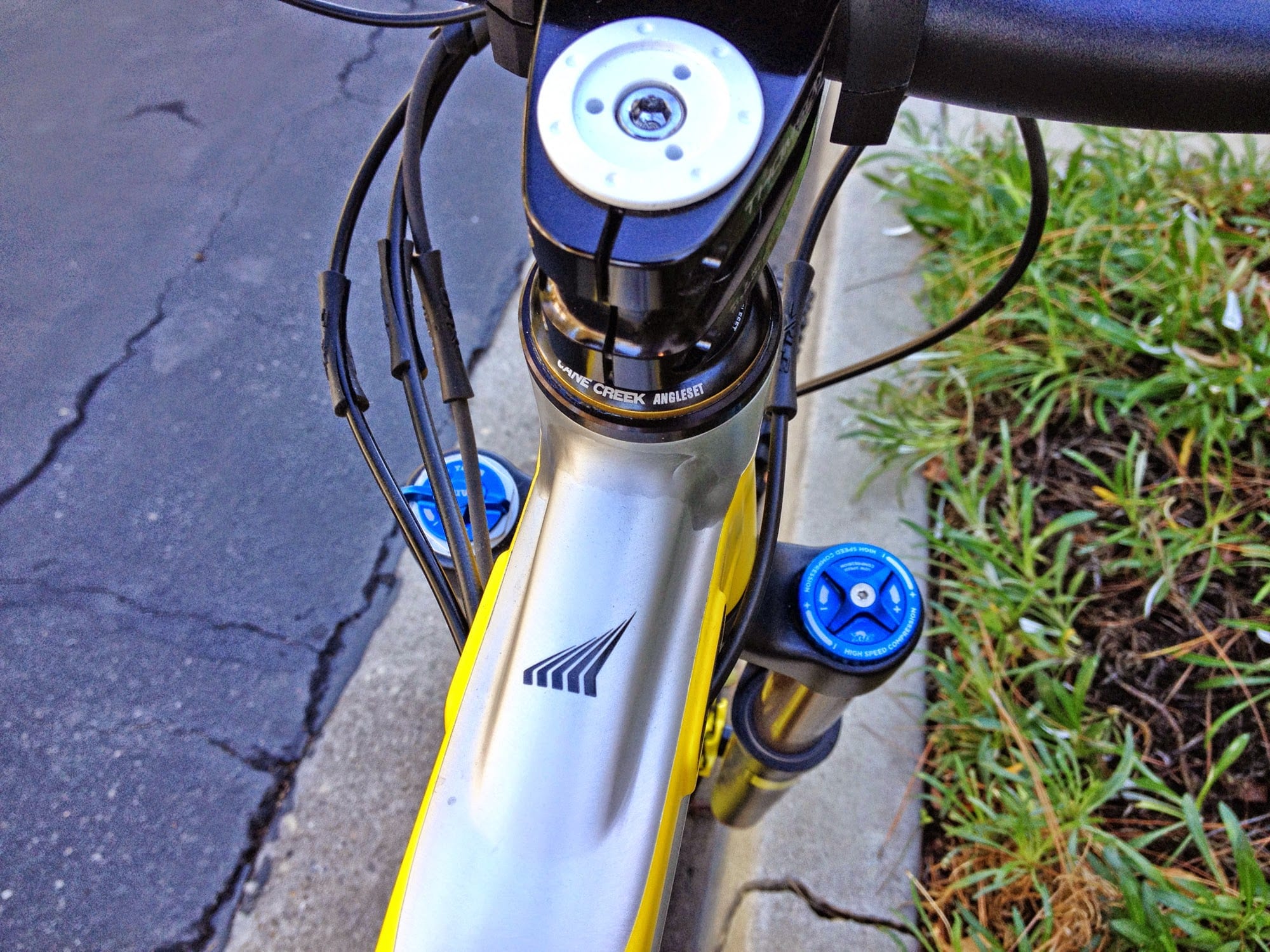
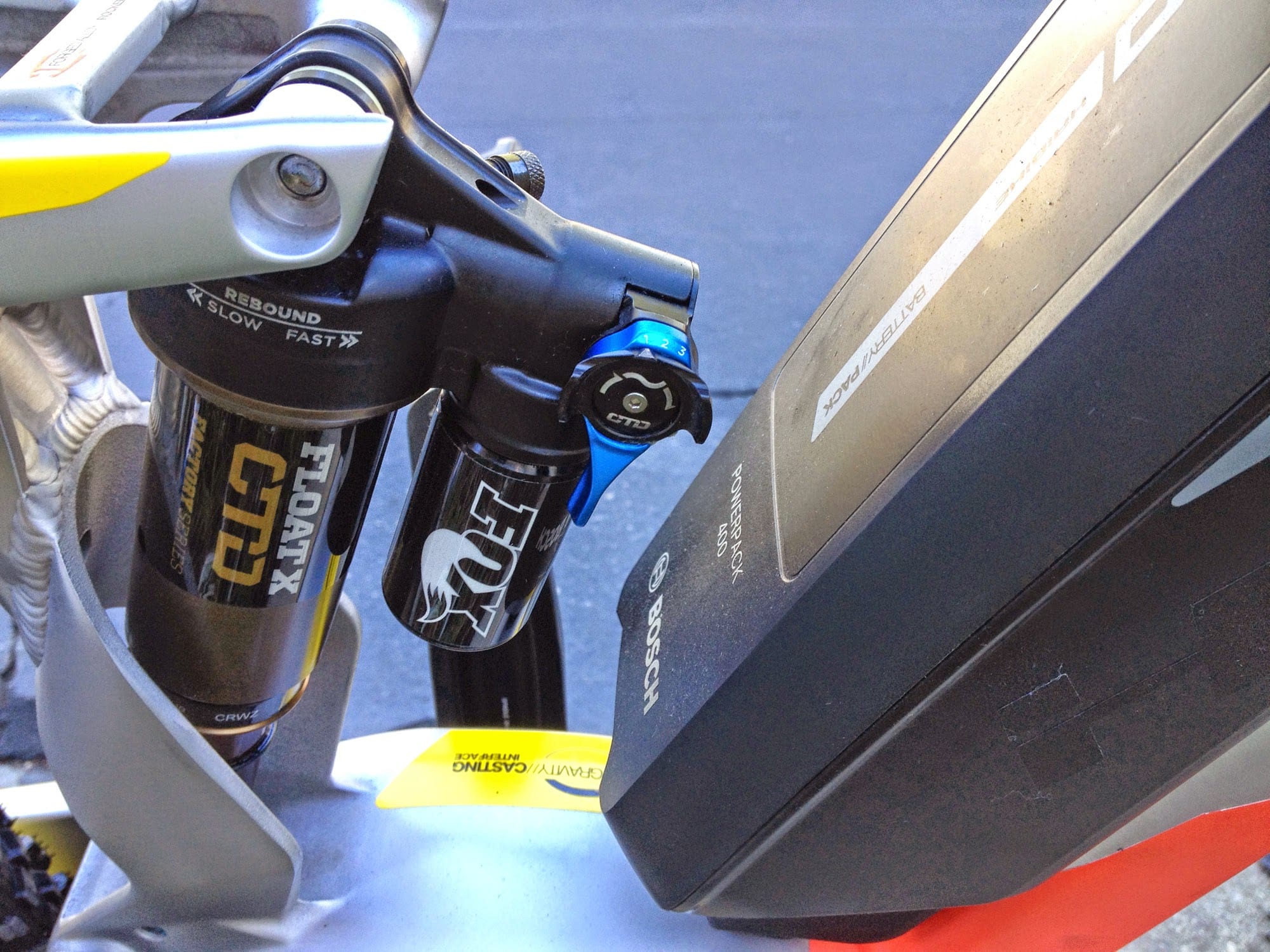
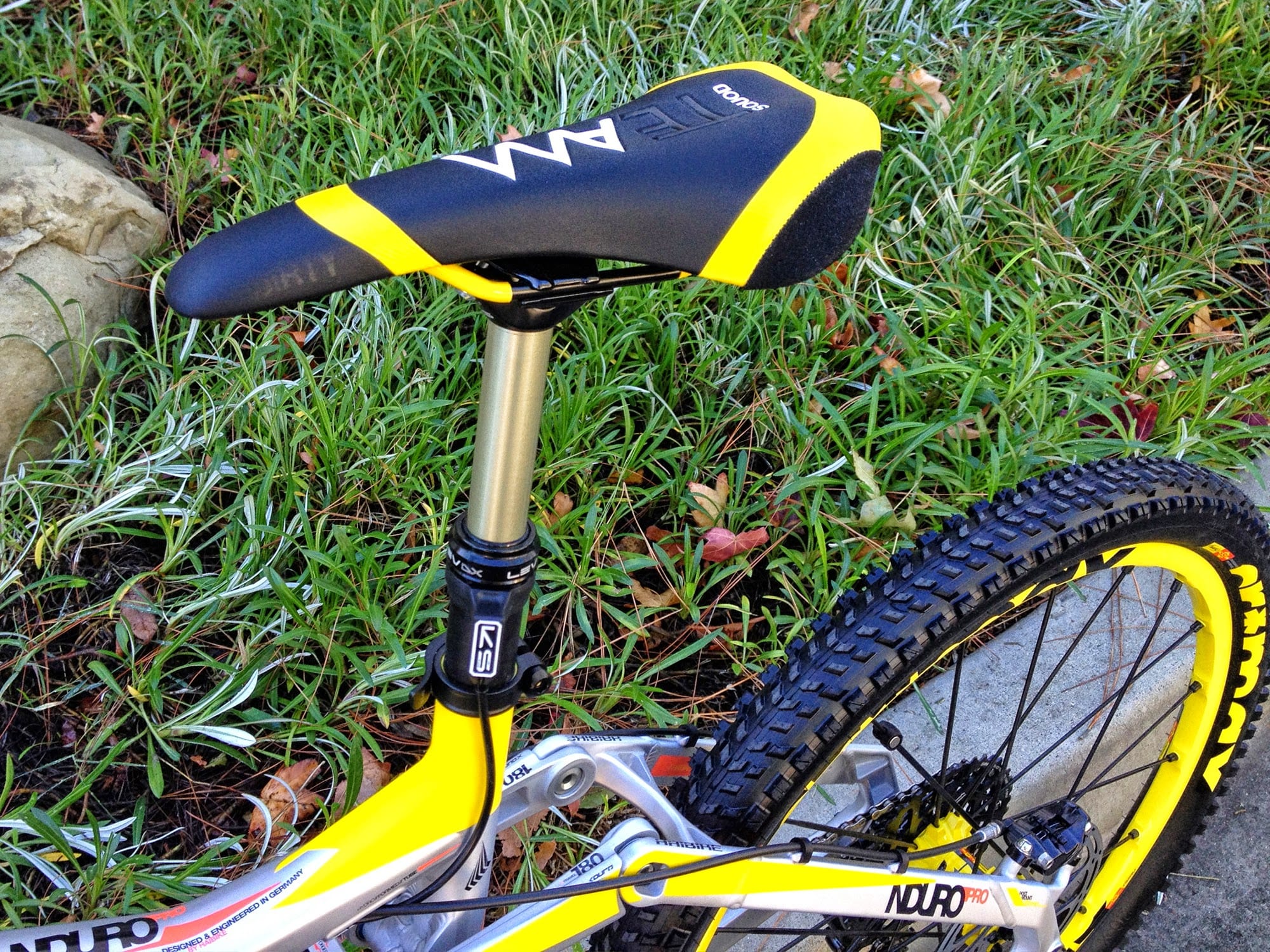
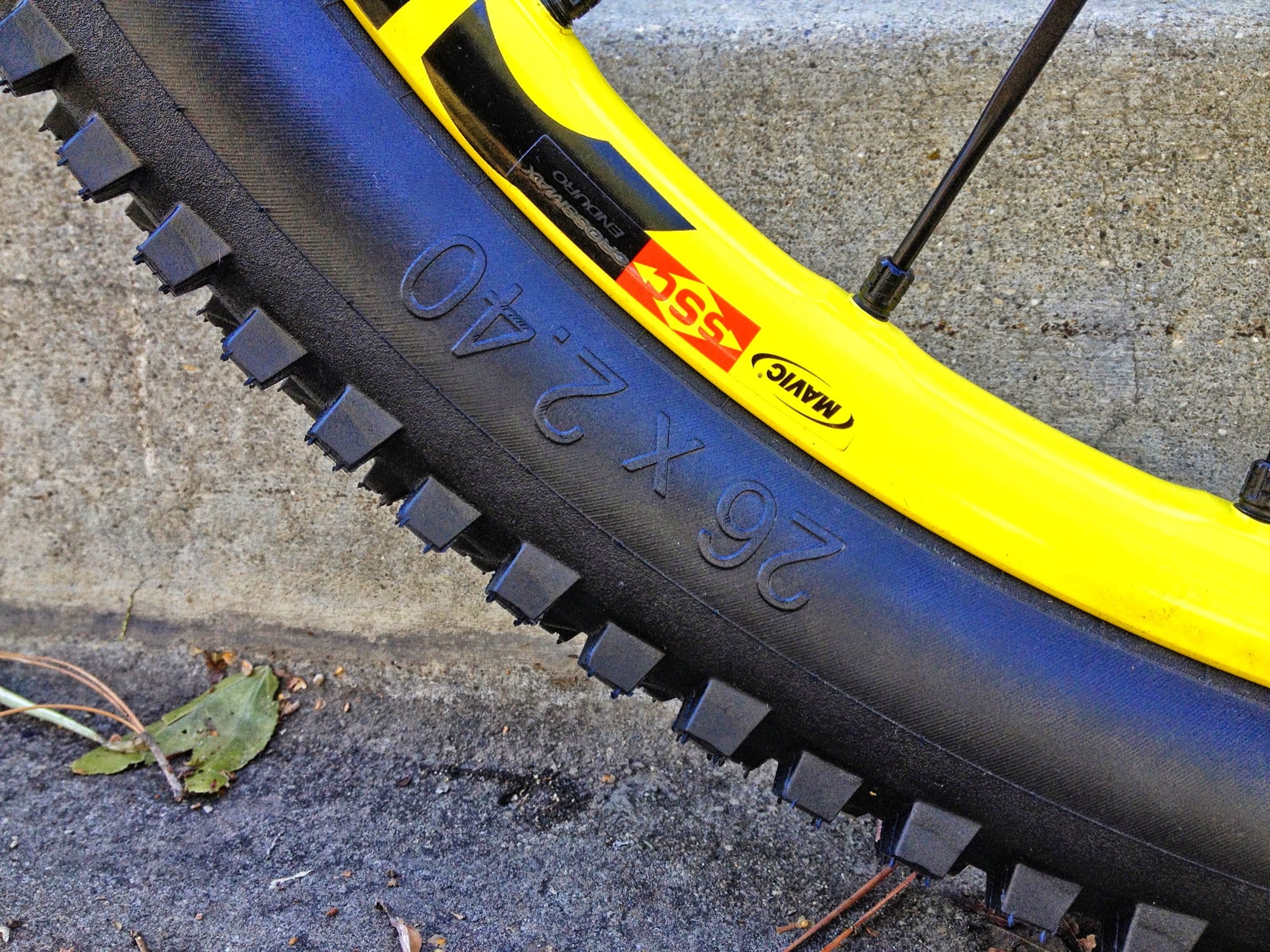
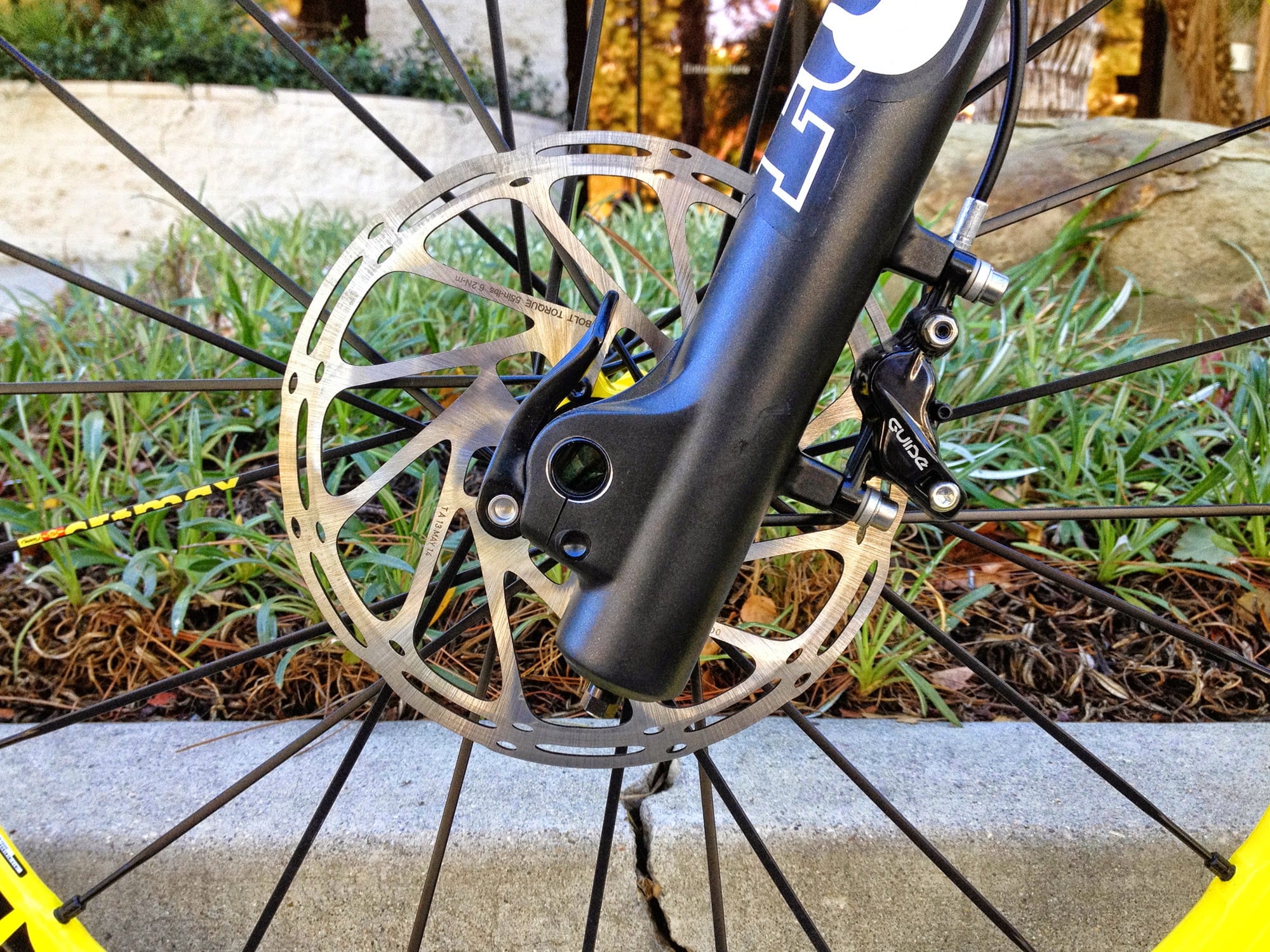
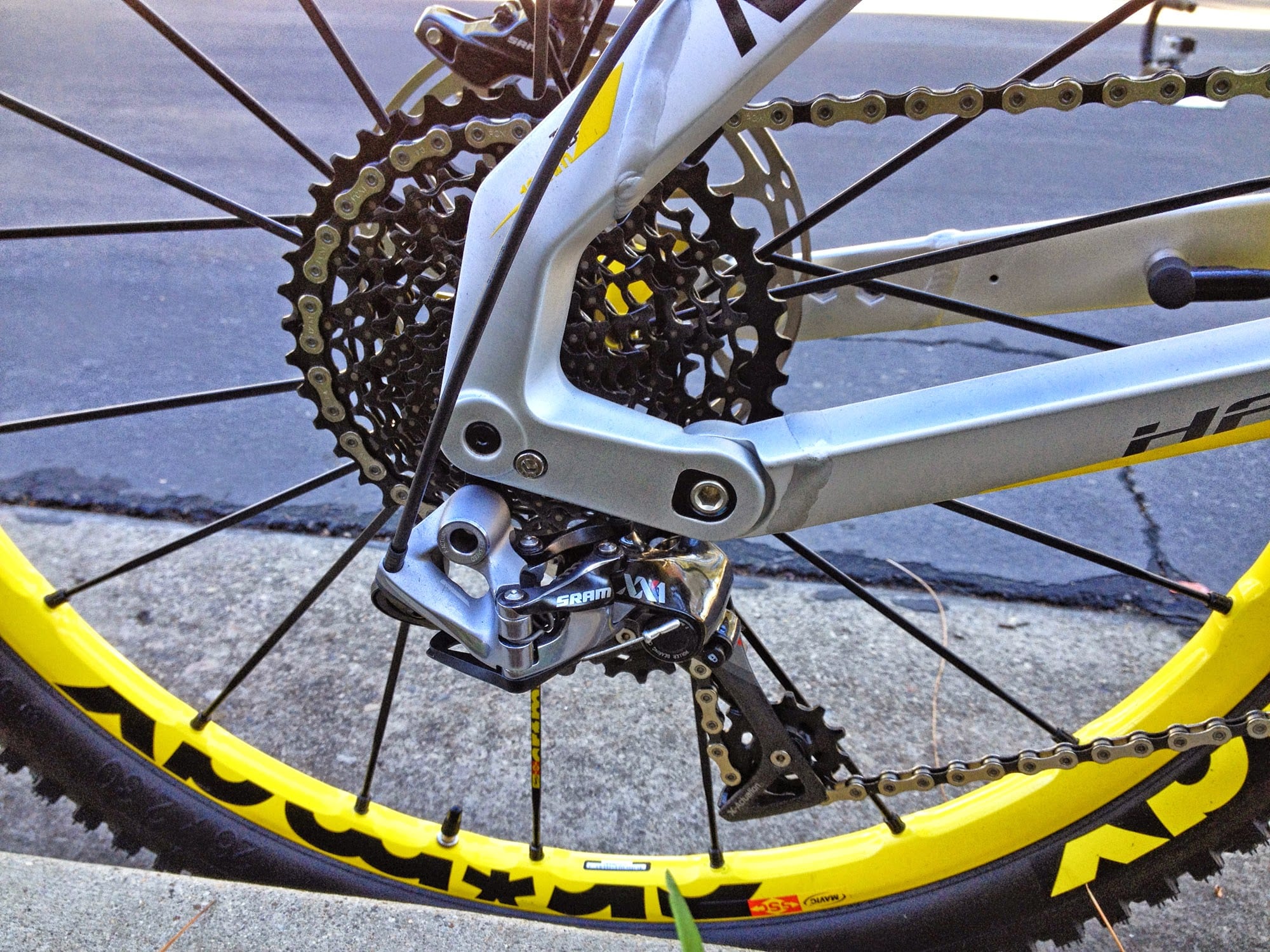
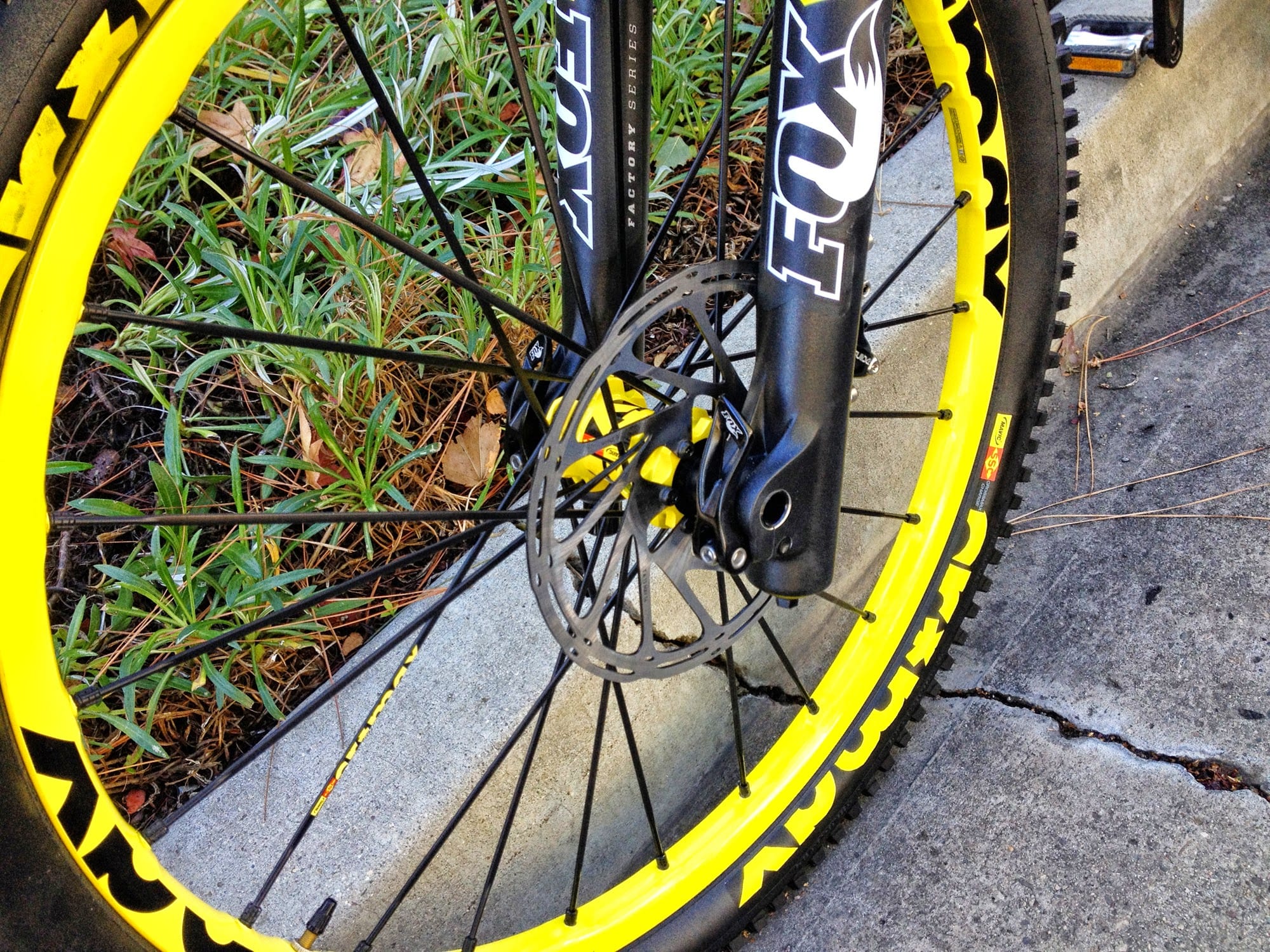
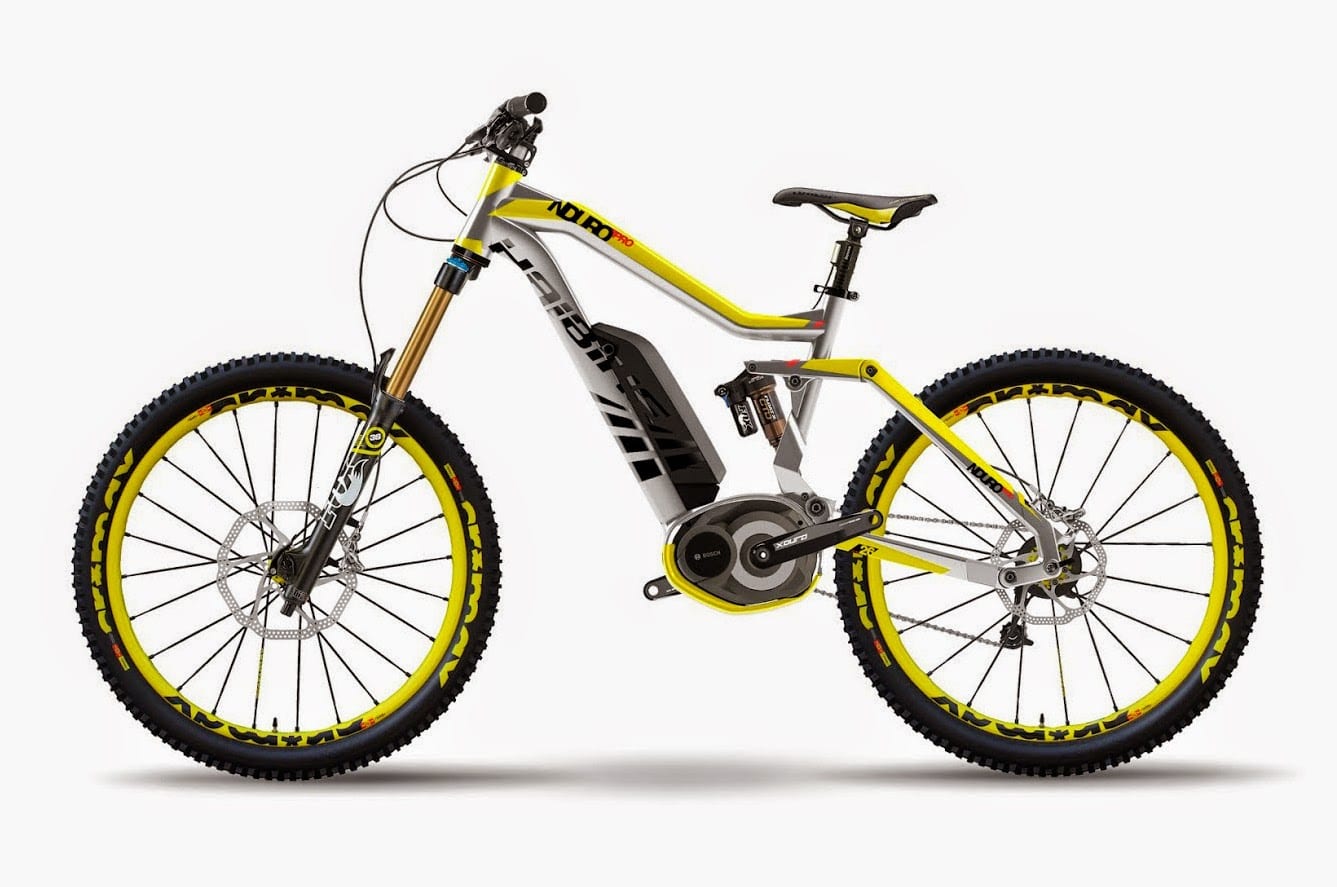
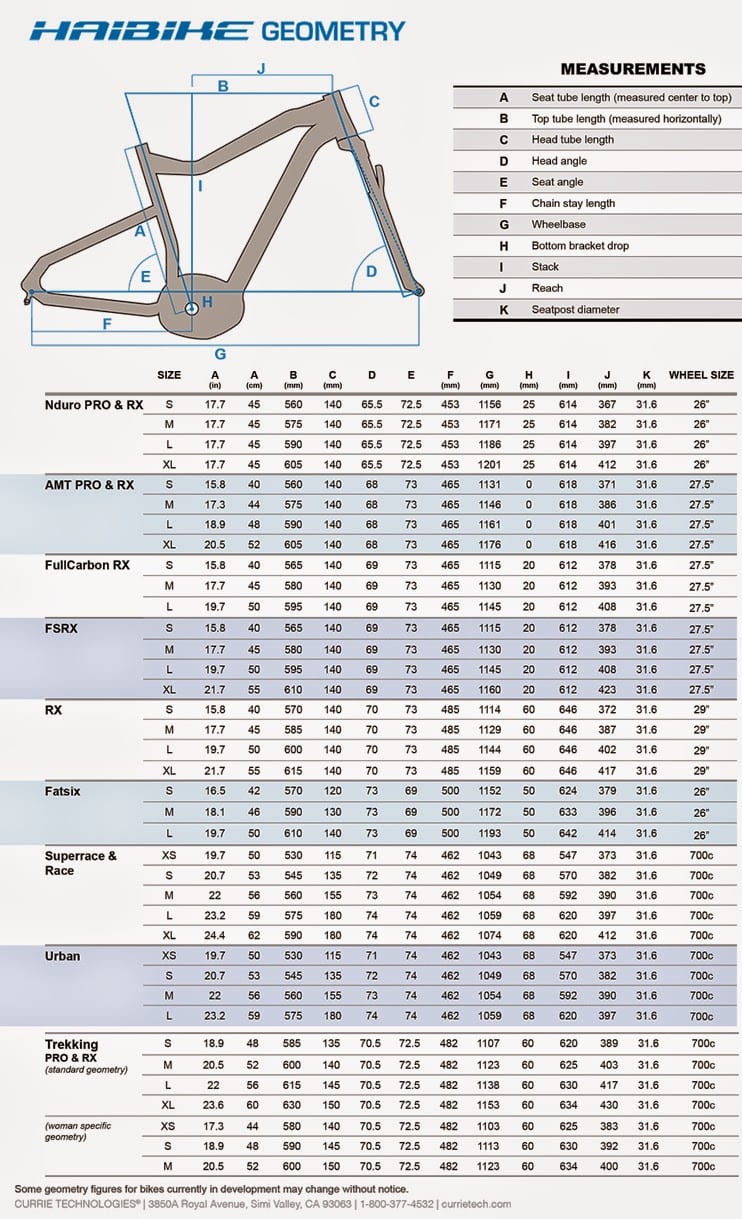

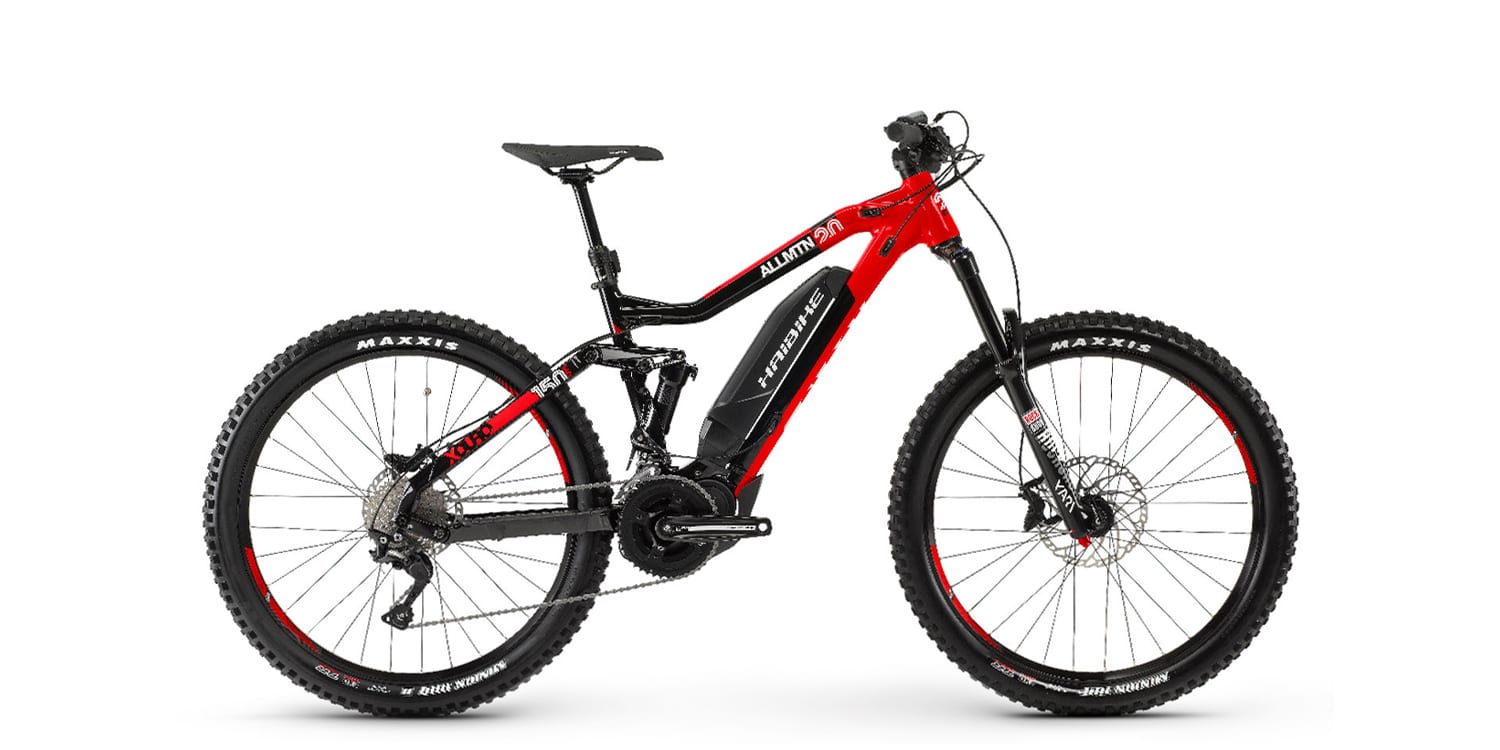
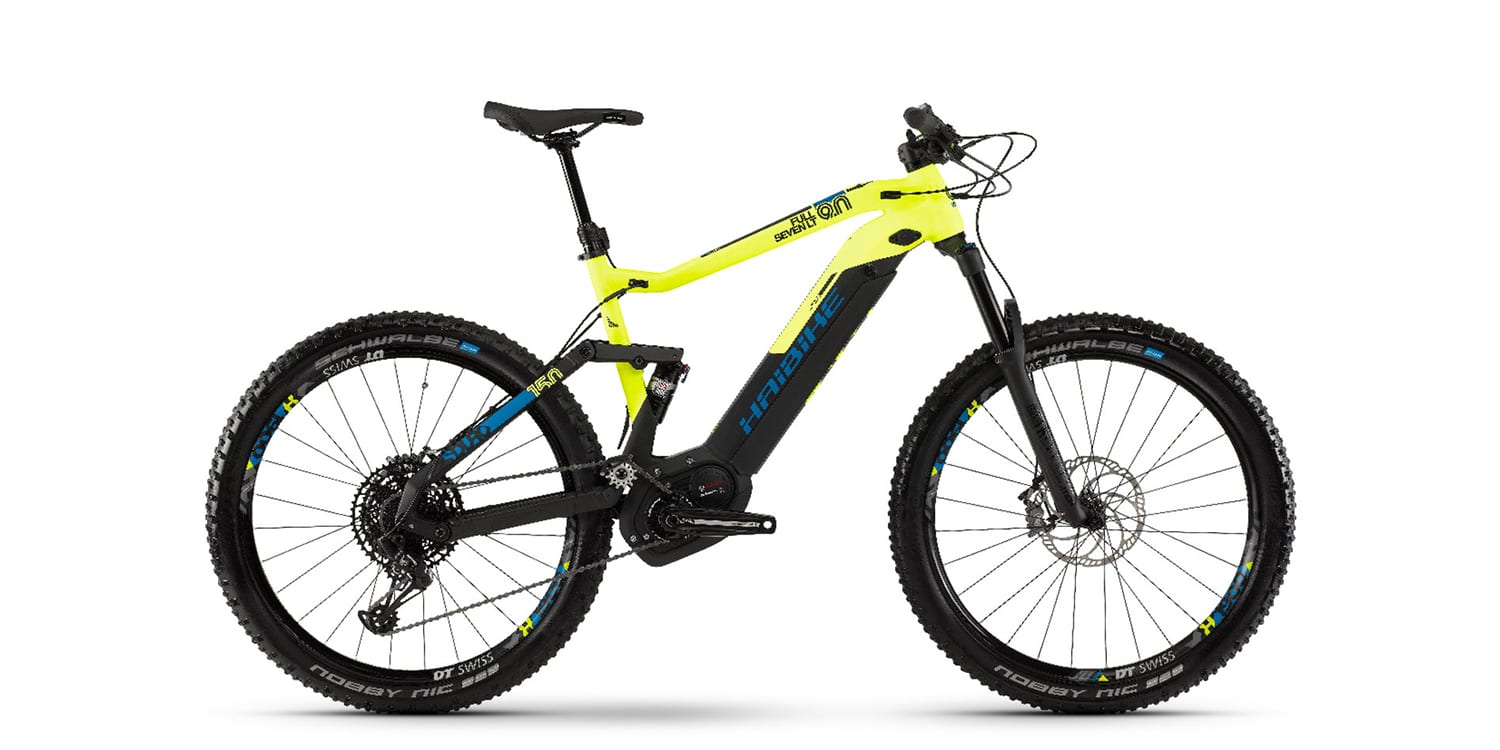
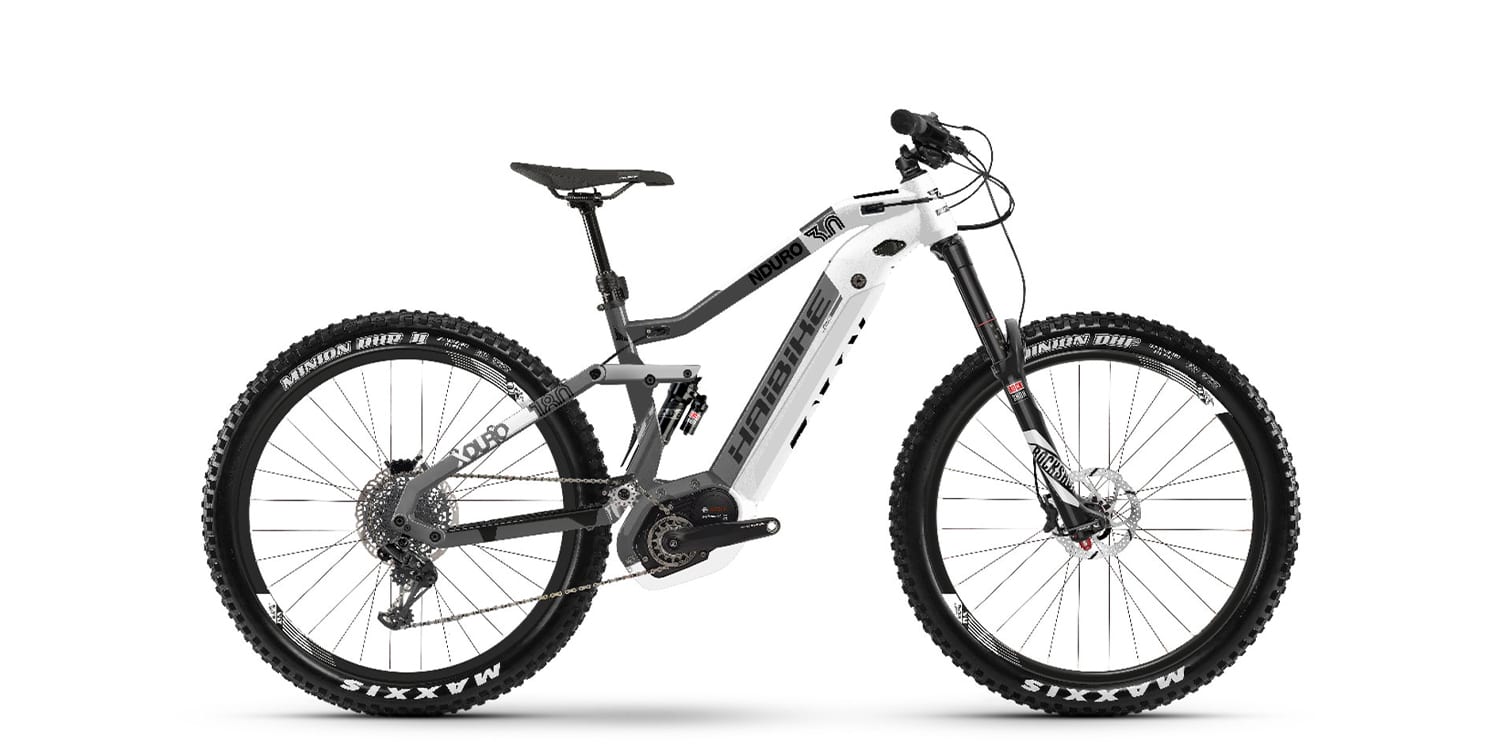
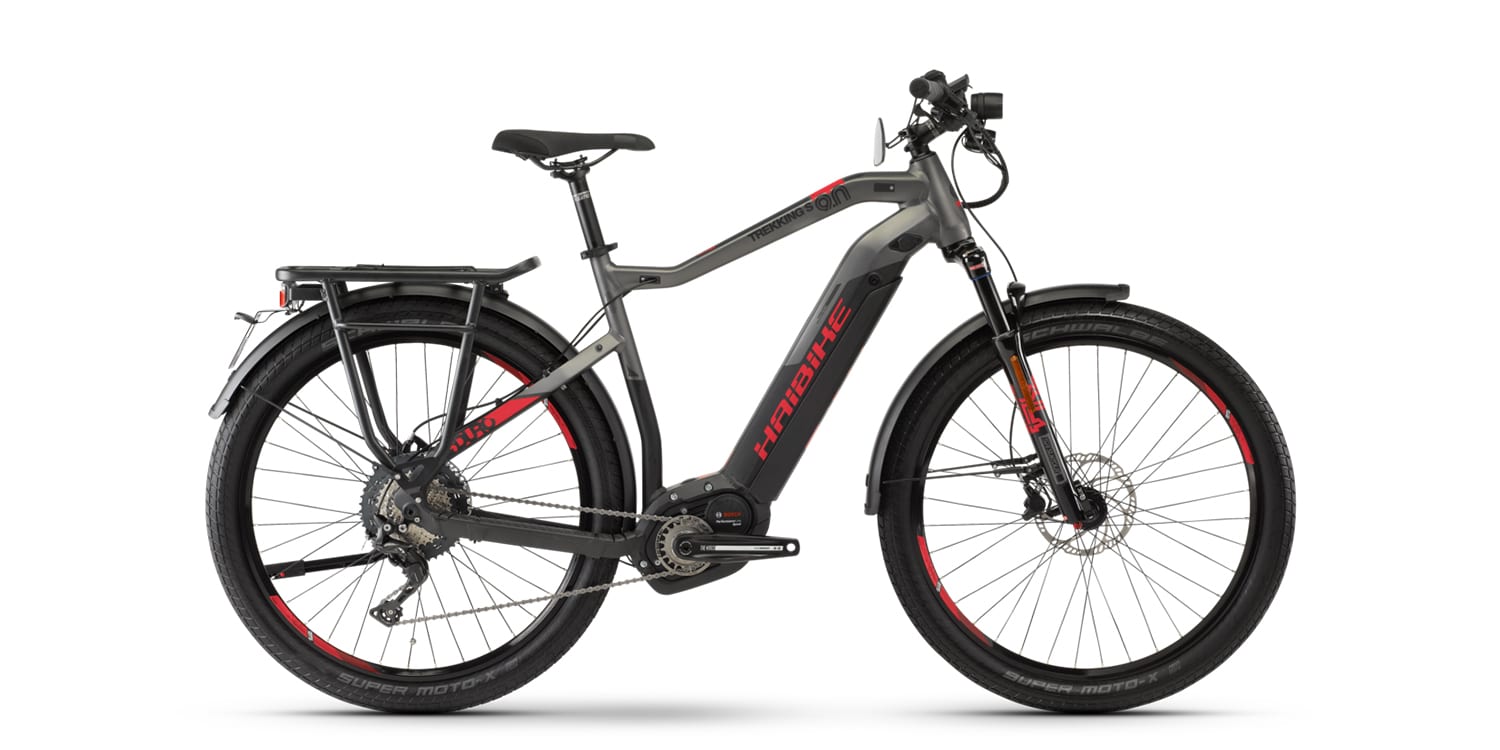
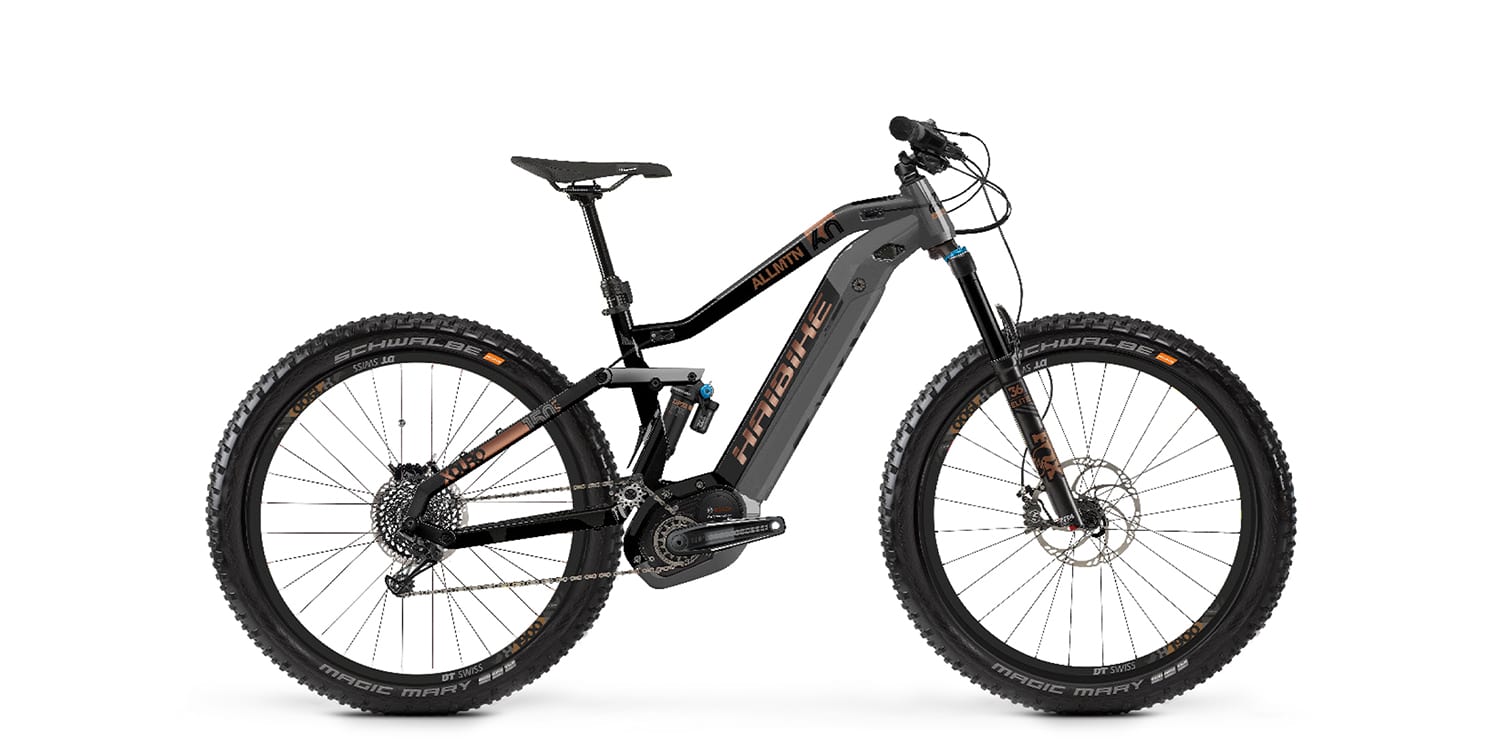
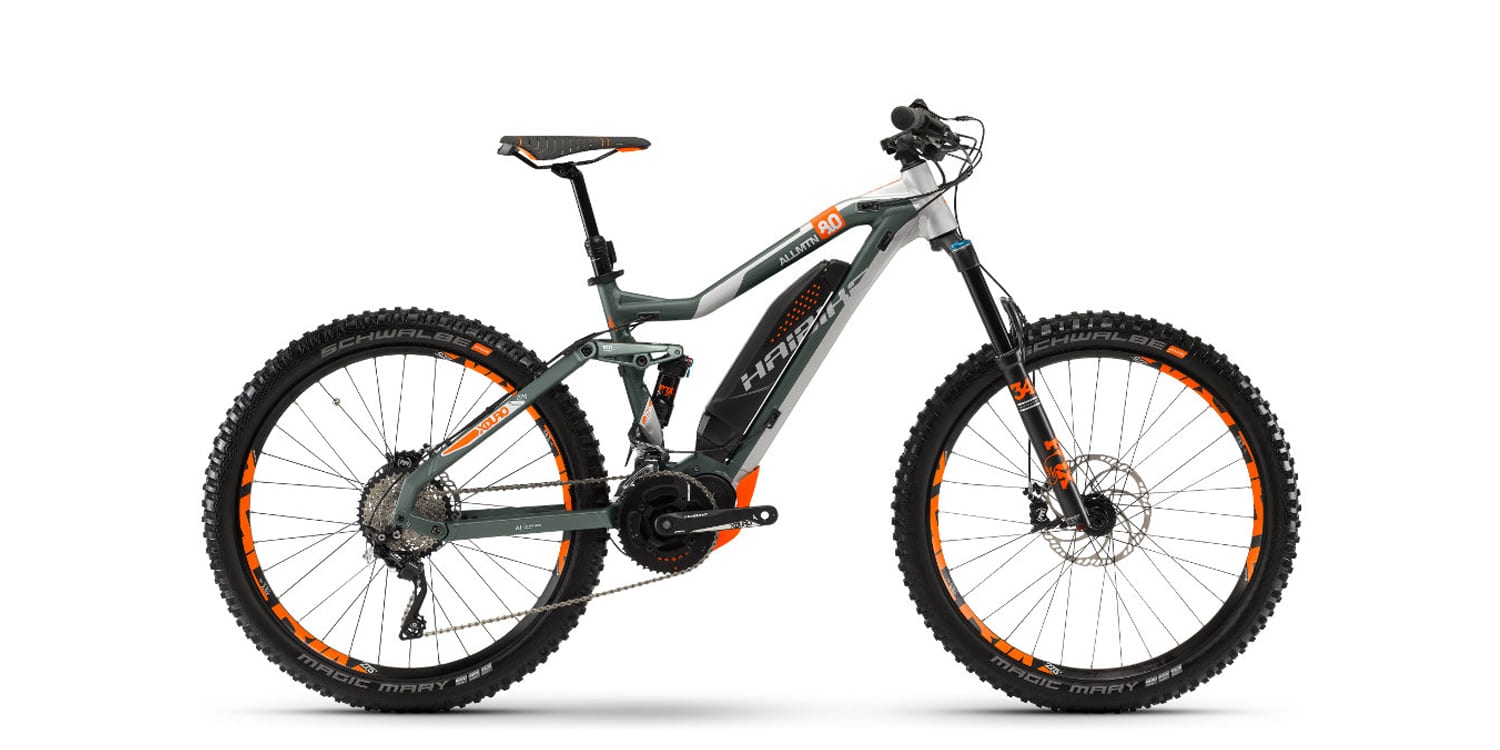
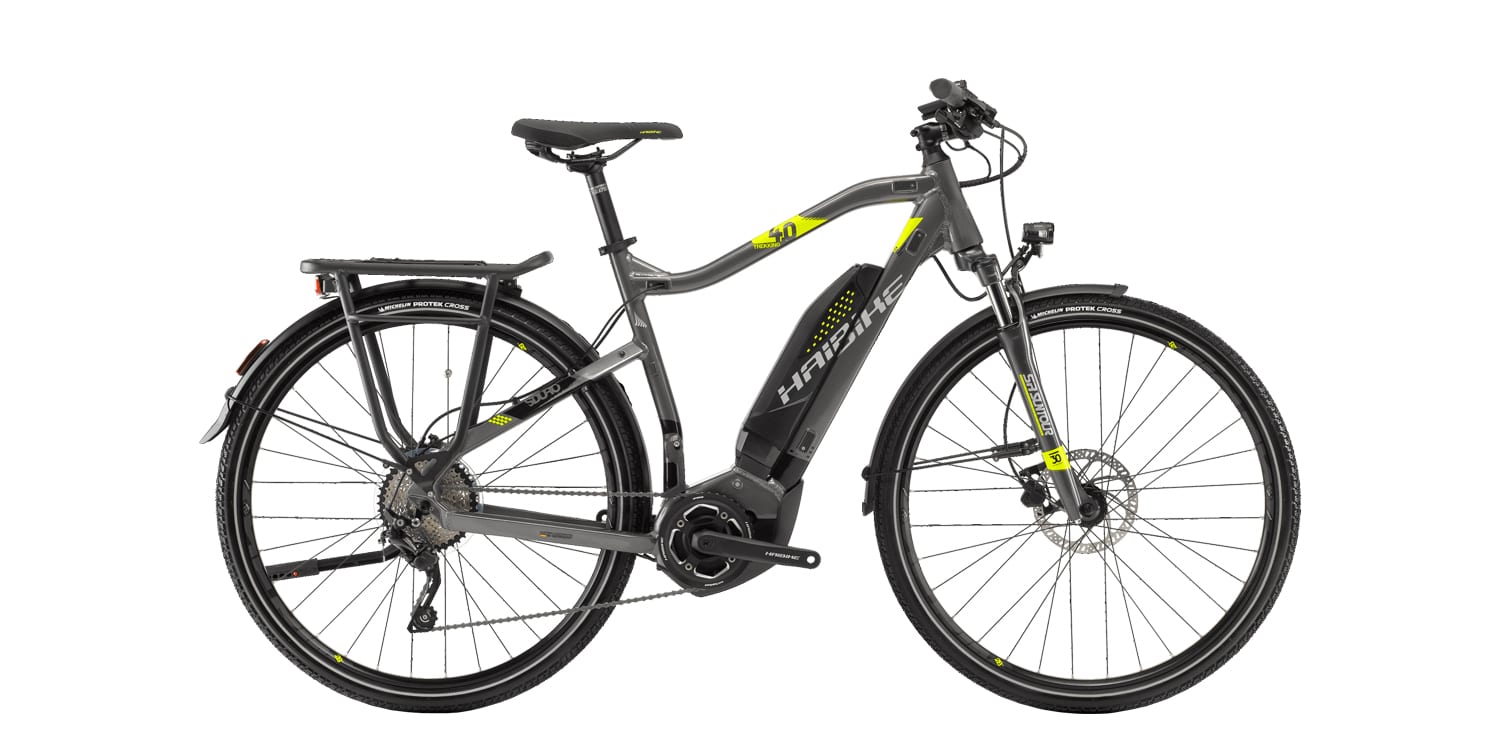
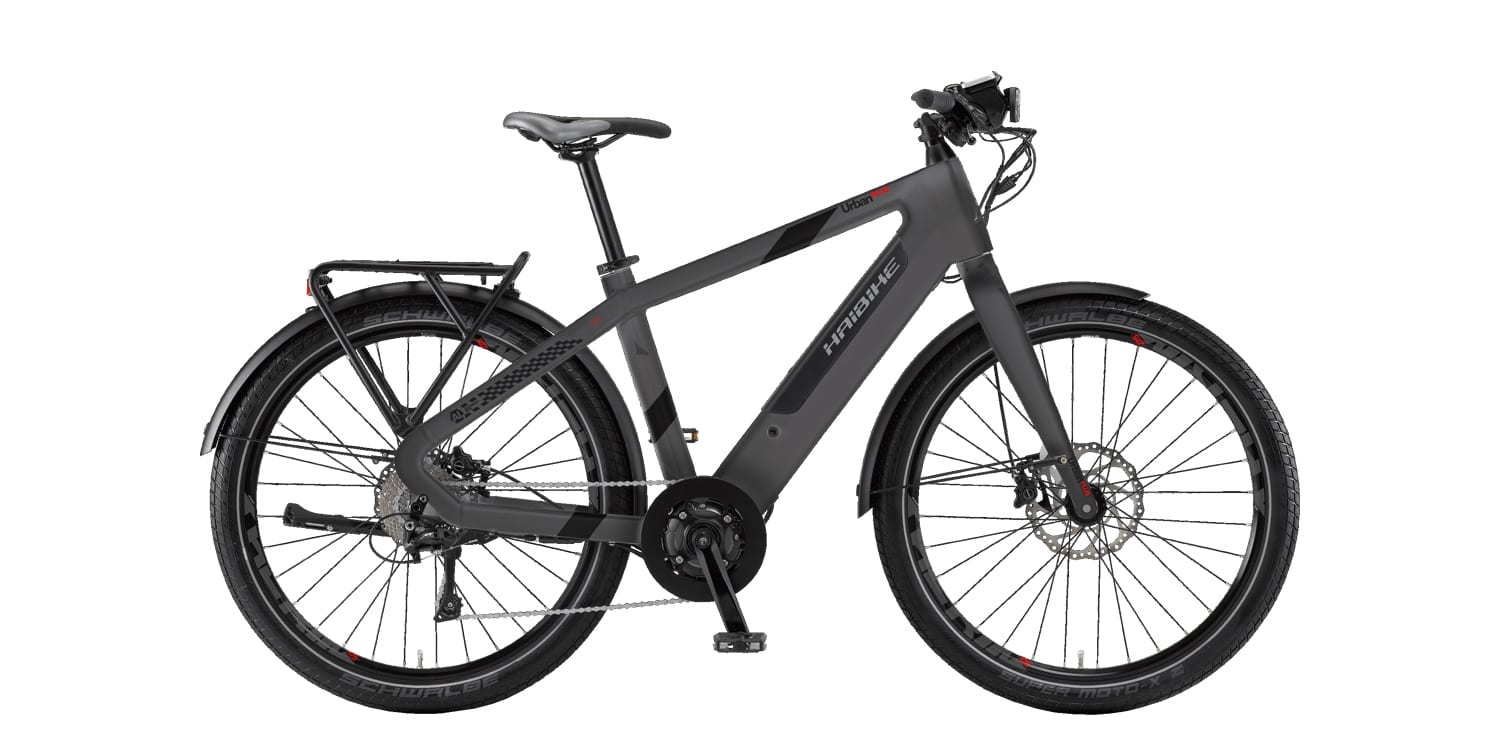
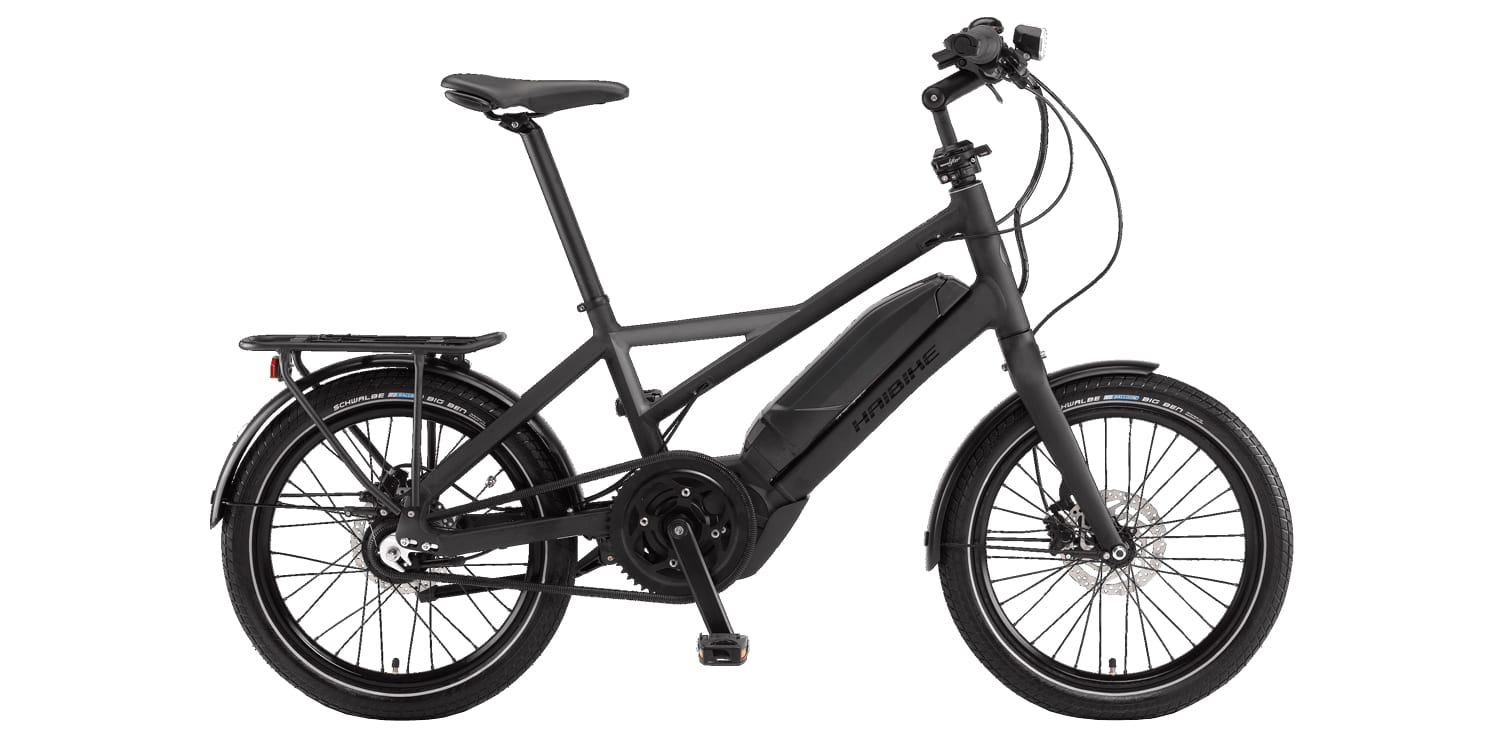
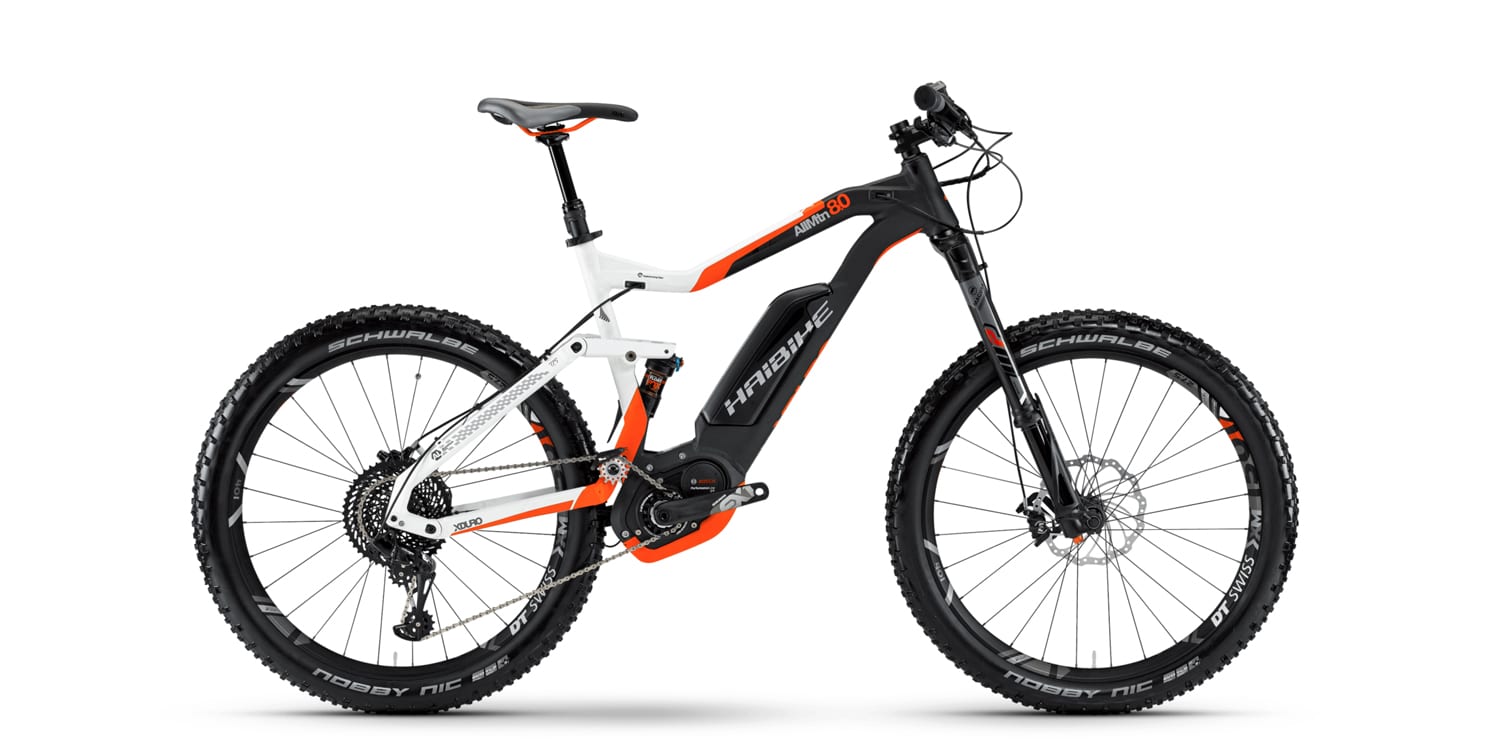
Dan says
Hey, love your reviews and videos, but the frame sizing is not correct, Nduro RX/Pro has one frame height (43 cm). The differece in size, is only the top tube length.
http://www.haibike.de/produkte_detail_en,72221,21185,detail.html under geometry.
Court Rye says
Interesting, thanks for the heads up Dan… I double checked the Haibike manual for the Nduro Pro and did see that the seat tube is listed as 17.7″ for every size. After reaching out to Currie I found that you are correct, the seat tube stays the same and only the top tube length changes :)
phil furlong says
would like more info thankyou
Court Rye says
What kind of information would you like Phil? I’ll be reviewing new Haibike models in the Spring and can try to dig in deeper for you if you provide a bit of feedback here :)
Carlos says
Há representantes no Brasil?
Court Rye says
At this time, unfortunately, I am not sure! I have never been to Brazil but my guess is that there are very few representatives there at this time. You may be able to order online and have one shipped :)
Neste momento , infelizmente, eu não tenho certeza ! Eu nunca foram para o Brasil, mas meu palpite é que há muito poucos representantes lá neste momento. Você pode ser capaz de encomendar online e ter um enviado :)